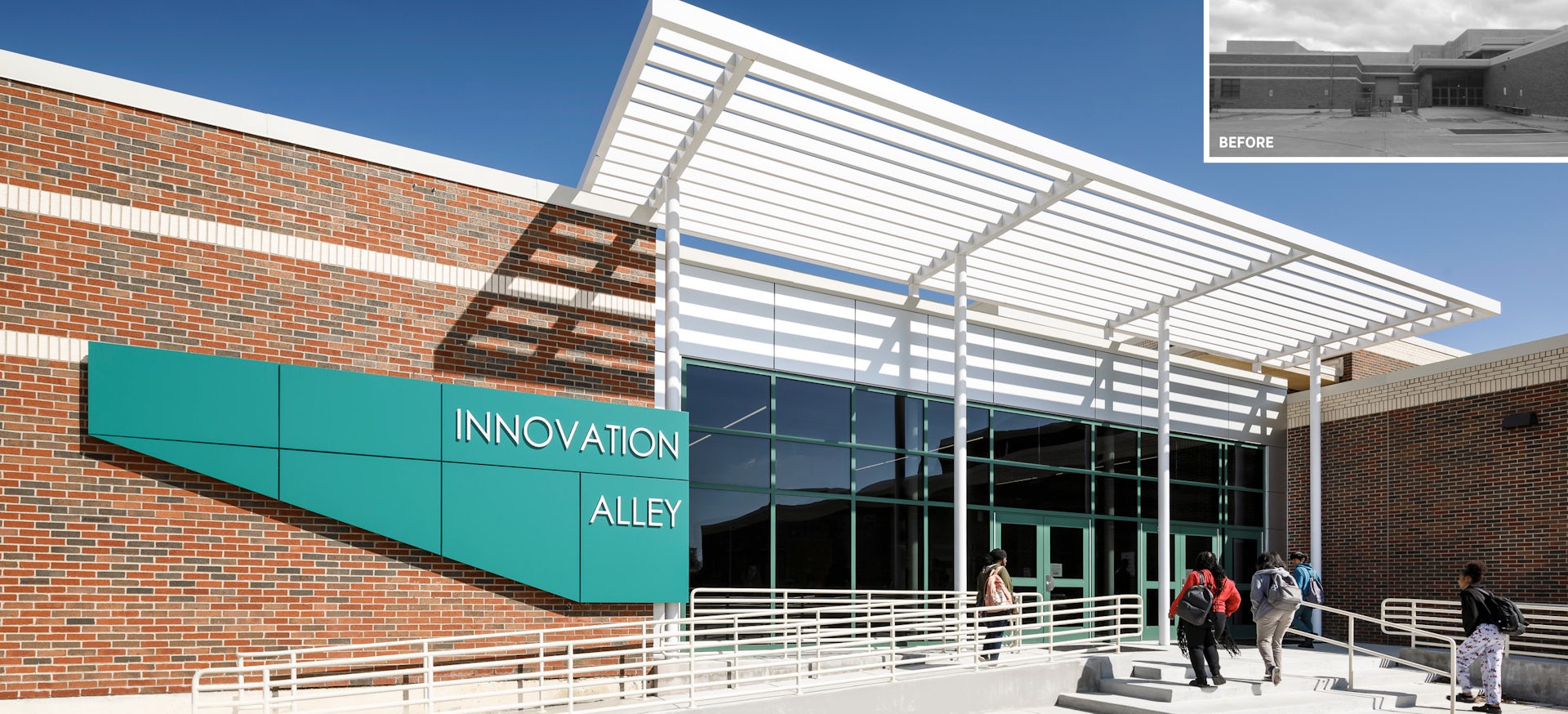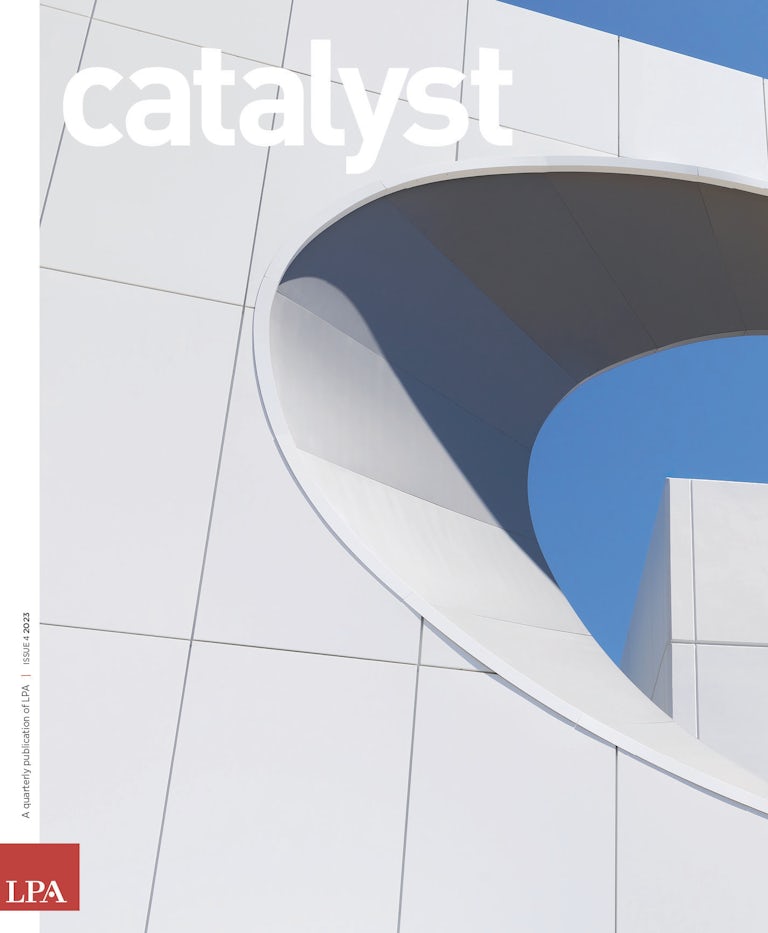The Challenge:
After five expansions between 1973 and 2019, Newman Smith High School in Carrollton, Texas, had become a tangle of dark, narrow hallways. The Career Technology Education labs that differentiated Smith’s program — courses on entrepreneurship, construction, fashion design, architecture and other fields — were tucked away into obscure corners and spread across two floors. Students had no day-to-day exposure to the unique curricular offerings, and many had no idea they existed at all.
The Solution:
Given a portion of bond funds to improve the campus, stakeholders gravitated to the idea of consolidating the career tech program where it would be more visible and could contribute meaningfully to the campus. Designers identified the disconnect between the public entry at the front and student entry in the rear of the school as an opportunity to improve circulation. The student entry and its adjacency to a large, untapped outdoor space offered the possibility of adding a student quad in the future. Taking a long view of the renovation, designers envisioned a new student hub that could grow over time.
















